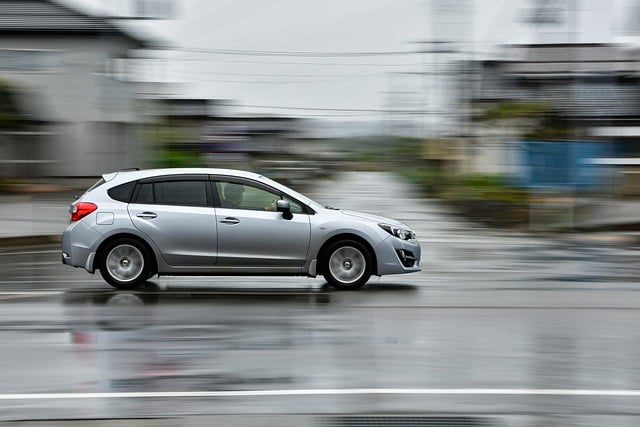Autonomous vehicles, commonly known as self-driving cars, represent one of the most groundbreaking advancements in modern technology. These vehicles utilize a range of AI systems to navigate, make decisions, and safely transport passengers without human intervention. In this beginner’s guide, we will explore how artificial intelligence (AI) powers autonomous vehicles and the different technologies that contribute to their functioning. By understanding how AI operates in self-driving cars, you can get a better sense of the potential it holds for transforming transportation.
AI in Self-Driving Cars: Key Technologies
Artificial intelligence plays a central role in the development of autonomous vehicles. From machine learning algorithms to computer vision, AI systems provide the necessary tools for these cars to operate effectively. Here’s a closer look at the fundamental components:
Machine Learning for Autonomous Vehicles
Machine learning is a core component of AI used in autonomous vehicles. It enables the car to learn from its environment and experiences, improving its decision-making capabilities over time. By processing massive amounts of data gathered from sensors and cameras, machine learning algorithms can help the vehicle detect objects, predict traffic patterns, and adapt to various road conditions.
One significant area where machine learning shines is in image recognition. Cameras and sensors continuously capture visual data, which is then processed by AI systems. These systems classify objects such as other cars, pedestrians, or obstacles, allowing the vehicle to react appropriately. For instance, when a pedestrian crosses the road, the machine learning model helps the car to recognize the pedestrian and stop in time.
Machine learning models are also responsible for optimizing autonomous vehicle behavior in different driving scenarios. Whether it’s city driving, highway navigation, or challenging weather conditions, the system constantly updates its knowledge base to handle new situations effectively. This ability to learn and adapt makes machine learning one of the most vital technologies in the autonomous vehicle ecosystem.
Deep Learning in Self-Driving Cars
Deep learning, a subset of machine learning, is another critical AI technology driving autonomous vehicles. It involves neural networks that simulate the human brain to recognize patterns, analyze data, and make decisions. In self-driving cars, deep learning is used for tasks such as image recognition, speech processing, and decision-making.
Deep learning algorithms process the data from cameras, radars, and LiDAR sensors to understand the vehicle’s surroundings. For example, deep learning allows the car to differentiate between a moving object like another vehicle and a stationary object like a traffic sign. This ability to interpret complex data inputs enhances the accuracy of the car’s responses to road conditions.
Furthermore, deep learning assists in predictive analytics for autonomous vehicles. By analyzing past driving behaviors and external conditions, the AI system can predict how other vehicles or pedestrians might behave, enabling the car to make safer and quicker decisions. This predictive capability is crucial for ensuring that self-driving cars can anticipate and avoid potential hazards on the road.
Sensors and AI in Autonomous Cars
AI-powered sensors are another critical aspect of self-driving technology. Autonomous vehicles rely on a variety of sensors, including radar, LiDAR, cameras, and ultrasonic sensors, to gather real-time data about their environment. The AI systems in these cars then process and analyze this data to understand the vehicle’s surroundings and make driving decisions.
LiDAR (Light Detection and Ranging) sensors create a 3D map of the vehicle’s environment by emitting laser pulses and measuring the time it takes for the pulses to return after hitting nearby objects. This helps the car identify objects, measure distances, and navigate through complex environments. Cameras complement this data by capturing visual details such as lane markings, road signs, and traffic lights, which are processed by computer vision algorithms.
Radar sensors help detect objects at a greater distance and can function even in poor weather conditions, where cameras and LiDAR might struggle. Ultrasonic sensors are primarily used for close-range detection, assisting in parking or avoiding obstacles. The integration of these sensors with AI systems ensures that the autonomous vehicle can safely navigate its environment and make intelligent decisions based on the data received.
Autonomous Driving Algorithms
The backbone of self-driving technology is the set of algorithms that dictate how the vehicle behaves. These algorithms control everything from path planning to object detection and decision-making. AI-powered autonomous driving algorithms allow the vehicle to respond to real-time changes in its environment, whether that’s a sudden stop from a nearby vehicle, an obstacle in the road, or a detour due to roadwork.
One of the most important algorithms used is path planning. This algorithm helps the car determine the best route to its destination while avoiding obstacles and following traffic laws. Path planning algorithms use AI to continuously update the vehicle’s route as conditions change, ensuring that the car makes safe and efficient decisions.
Another critical algorithm in autonomous vehicles is the object detection and classification algorithm. It works in conjunction with the car’s sensors to recognize and classify objects like vehicles, pedestrians, and cyclists. AI systems analyze this data in real-time to determine the appropriate action—whether to stop, slow down, or change lanes.
Finally, decision-making algorithms in autonomous vehicles use a combination of data from machine learning models, deep learning, and sensors to make real-time choices. These algorithms are designed to prioritize safety, ensuring that the vehicle follows traffic laws while avoiding collisions or dangerous situations.
AI for Vehicle-to-Vehicle Communication
Vehicle-to-vehicle (V2V) communication is a promising area where AI is making strides in autonomous vehicles. This technology allows self-driving cars to communicate with each other, sharing data about their speed, location, and direction. AI processes this information, enabling vehicles to coordinate with one another and improve traffic flow.
For instance, if a car ahead detects a traffic jam, it can send a signal to nearby autonomous vehicles, allowing them to slow down in advance. V2V communication powered by AI can also help prevent accidents by ensuring that cars maintain a safe distance from each other and react more quickly to sudden changes in traffic.
AI systems play a vital role in ensuring that vehicle-to-vehicle communication is efficient and secure. The AI can analyze the data received from other vehicles in real-time and make decisions based on this information. As V2V technology continues to develop, it will likely reduce congestion and increase safety on the roads, making self-driving cars even more efficient.
Conclusion
AI has become the driving force behind autonomous vehicles, enabling them to navigate, learn, and make decisions with minimal human intervention. By integrating machine learning, deep learning, and sensor-based technologies, self-driving cars can understand their surroundings and respond to changes in real-time. As autonomous vehicle technology continues to evolve, the role of AI will only become more critical in shaping the future of transportation. Through innovations like vehicle-to-vehicle communication and advanced driving algorithms, AI is setting the foundation for a safer, more efficient, and autonomous driving experience.






